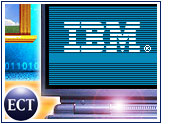
Two recent “failures” of offshoring projects have been publicized as if offshoring does not work. The most highlighted instance is Dell’s return of some support activities to the U.S. The second is Conseco insurance company’s 2001-2002 foray into owning its call center in India.
These two instances of standalone offshoring efforts by U.S. firms have achieved mythical status. They have been cited by both proponents and opponents of offshoring.
The Dell and Conseco situations are examined here from the perspective of a pro-offshoring, but go-slow approach by U.S. firms. This perspective’s thesis is that U.S. firms often have neither the offshore IT project management experience nor familiarity with workforce management issues that they need in order to go offshore quickly on their own.
We in the offshoring industry are quick to identify and berate the lack of management experience and expertise among South Asian IT professionals, even at the highest levels. At the same time, we often fail to consider the consequences of a corresponding gap in international experience by U.S. managers, or that the management gap in U.S. firms going overseas may have far more to do with offshoring failures than any other factor.
Management Inexperience Abroad
I’ll refer to the management style of Americans offshore as the Green Zone management style. This management style will see wider use as offshoring expands from large firms to midsized ones. Midsized U.S. firms are going offshore in increasing numbers to remain competitive with their larger rivals. Two or three new IT facilities reportedly are opening every week in Bangalore alone.
Failures of the Green Zone management style will be harder to avoid by the midsized firms that employ it. Many of the midsized U.S. firms that are going offshore for the first time lack the capacity to anticipate and absorb the high transaction costs of going offshore with standalone operations on the model employed by Dell and Conseco.
Large firms often can absorb high transaction costs for going offshore. Having gained efficiencies and economies offshore, early movers then can underprice and outperform their competitors.
The Conseco example cited herein could have worked perfectly in this regard, if its offshoring adventure hadn’t exploded first. We will look at Conseco’s experience after first discussing Dell.
Dell in the Green Zone
Dell’s Bangalore facility had the type of institution-building problems that often are seen when an organization from one country tries to establish and maintain a project overseas.
Dell’s support center manager reportedly was poorly recruited, their training programs were too brief and support from the U.S. for the center was inadequate. These are common problems in technical support operations both onshore and offshore. None of this is the fault of Dell’s Indian agents or the offshore support model.
We in the industry often find these same problems at U.S.-based technical support operations. The problems may be realized when, as outsourcing management specialists, we are called in to move technical support operations offshore. When we ask to see support procedures, training materials and performance records, we are often told that none exist. Going offshore is the first opportunity that many of these operations have had to be rationalized, formalized, monitored and upgraded. This is true for both large and small support operations.
The real story behind Dell, if the buzz in the industry is to be believed, is that Dell received a call from the White House asking for a demonstration of a U.S. high-tech firm reducing offshore call center operations. Dell reportedly responded positively.
I do not expect Dell to confirm this publicly in the U.S. However, their statements to the Indian press are not inconsistent with these reports. Dell’s spokespeople stressed to the Indian press that there will be no reduction in Dell’s commitment to building both their organization and their workforce in India.
Conseco in the Zone
Indians often view American business people as rich, dumb and happy. Conseco lived up to that stereotype, not just in terms of having excessive compensation packages for its top U.S. executives, but also in regard to how it went about its standalone offshoring operation.
Conseco paid US$52.6 million in 2001 for an existing call center in India. Conseco reportedly charged too much for its services while not installing enough American managers to oversee the place properly. Late in 2002 Conseco sold the center for a $20 million loss.
Conseco’s issues regarding shortages of American staff offshore are understandable, since we were unable to recruit even one good American claims processing manager to work on Indian projects during the period when Conseco owned its offshore facility.
Younger workers are easier to place offshore than older ones with family responsibilities. Most Westerners in India are in their twenties or early thirties. In Asian societies, older managers are often more respected (and consequently more effective) than younger ones. I’ve often heard senior Indian managers refer to each other in terms of one-year age differences, even late in their careers.
Conseco’s purchase price for its center is not understandable. We have been trying to sell a pair of call centers in India for $50 million less than Conseco paid for its center. Our centers may not be the flashiest models on the road, but there is a lot of fixing up that can be done with $50 million in savings.
Conseco had corporate accounting and governance issues in the U.S. that in 2002 led to a corporate reorganization under Chapter 11 and the sell-off of its Indian facility at the end of that year. Conseco’s larger governance issues overtook its offshore, back-office operations, not the other way around. Hubris also played a major role in Conseco’s decisions regarding its Indian operation and its descent into bankruptcy.
Working the Offshore Model
Conseco was in too much of hurry and paid too much money to rush into India with a standalone operation. It should have taken the low-budget route and built up a trained staff in India gradually. Conseco should not have gone it alone until it had the staff it needed, delivering services with the quality that its clients expected, and at appropriate price points.
Dell’s experience highlights the difficulty that many firms have in recruiting good local staff in Bangalore. Bangalore is just too saturated with IT facilities. The international call center industry did not exist in India at the beginning of 1999. Now, with so many firms competing for talent in Bangalore, it is hard to recruit and hold onto good agents and first-level supervisors.
In 2001, when we first started keeping statistics on turnover at the call centers that we worked with, a 10 percent annual employee turnover rate at a facility in Bangalore was cause for alarm. Now, rates of 30 percent to 40 percent per year do not raise eyebrows.
Agents are going from one IT firm to another in Bangalore. Both labor and nonlabor costs are rising there. In 2009 Bangalore will have priced itself out of the market. The industry in India is following the same pattern that it did in the U.S., where call center locations shifted to smaller towns.
In addition to smaller towns, India has the huge metropolis of Kolkata (formerly Calcutta) with a largely untapped labor force. Kolkata has enough pent-up economic energy and brainpower to change the world economy on its own. And it will.
The examples of Conseco and Dell are not proof that the offshore model does not work, only that it is a bad idea to rush into standalone operations in saturated areas and to go anywhere with inadequate support from the U.S. and a shortage of qualified overseas talent.
Anthony Mitchell, an E-Commerce Times columnist, has beeninvolved with the Indian IT industry since 1987, specializing through InternationalStaff.net inoffshore process migration, call center program management, turnkeysoftware development and help desk management.




















































Social Media
See all Social Media